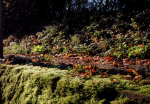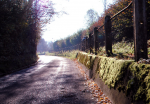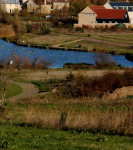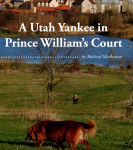Do you want to move to England?” my wife asked me eight months ago. “I’ve been offered an position in Cambridge University.” Cambridge: where Sir Isaac Newton discovered gravity and calculus. Home of Stephen Hawking who verified the Big Bang Theory. I was floored that my wife was offered a job here!
While all the prestige associated with Cambridge was certainly a draw, the deciding factor for me was the beer. England is famous for its ancient pubs offering cask ales such as those our forefathers drank. While Golda can pursue her passion for asking questions such as: “How do electrons behave both like a particle and a wave, ” I will explore my curiosities of finding the perfect balance of sweetness and bitterness in ales and IPAs.
As a preamble: I’ve never been much into sightseeing, nor am I searching my Lonely Planet Guide for the “must see” clubs or attractions. Nor do I don’t want to report on the Royal Family, (unless they invite us for dinner). More like Mark Twain, I am interested in experiencing the people and the culture through my own particular lens. I am biased, I believe I come from one of the best places on earth, and I bring Utah with me in my back pocket. But as a humble observer my hope is I can share some basic insight into a different lifestyle. I am a Utah Yankee, residing in Prince William’s Court. (For those who don’t know: Prince William was recently crowned Duke of Cambridgeshire by Queen Elizabeth after his marriage to Kate.)
Mark Twain wrote a book called “A Connecticut Yankee in King Arthur’s Court.” His protagonist suffered a blow to the head and travelled back England of yore. While I didn’t suffer a blow to my head that had me travel back in time to early medieval England, I certainly sometimes feel like I’m living in another time and era.
We are living in a suburb of Cambridge in the small village of Cambourne. On first inspection it seems to me Cambourne is like Draper. It’s about as old as Draper, has similar demographics (mostly twenty and thirtys-somethings with kids). Like much of Utah County, Cambourne was built over what were once mostly orchards 10 to 15 years ago. This was done to provide more affordable housing options for those who were willing to commute a greater distance to the city (eight miles). But the similarities end there.
The English don’t seem to find the 2,500 square foot stucco home on quarter-acre lot as a dream come true. Instead, the homes here are typically built on tiny lots with very little distance between them. There are some big houses, but square footage is achieved by building taller, rather than wider. This leaves no space for front porches or large gardens.
While some might cringe over the lack of personal property, there is a huge benefit to this building model: surrounding Cambourne is a vast nature preserve accessed via footpaths. These paths lead to ponds, community gardens, fields and neighboring towns, and while walking these paths there is no need to worry about getting hit by a car.
From a newcomer’s perspective it appears that the English don’t have the luxury of making the same poor design mistakes that we have in the West, sprawling our developments, and gobbling up land to create a car dependent culture. Instead they have designed their communities thoughtful of the tradition that we are capable of using our legs for walking to places. The store, post office, pubs and restaurants offer little parking but are not difficult to walk to from any part of Cambourne. Also, it is apparent that they must highly value the English country-side rural vast expanses. On Saturdays we can hear hounds barking in the distance. I learned that not too far from our town house fox hunting on horse back is still popular.
One afternoon my dogs and I were following a footpath out of Cambourne through lush farmlands. The path eventually came to a gate which opened to a small road that led to an entirely different town called Bourne, with its own pub, and entirely different beers on tap! In Bourne I found roof tops decoratively designed using thatching or straw. The town of Bourne looked like something out of a fairy tale. We met a man who’s proudly directing his daughter on her Arabian horse, “Yesterday she went fox hunting. She can fire a rifle from her horse, and she is only 16.” The fox hunters can follow the footpaths through fields owned by many different families. It seems it is this hunting tradition that has driven so much of the development with an eye towards preservation.
Here there aren’t giant, mega-developments, like we find in Utah, which require farmers to give up their property in the name of progress. Instead, they build their suburban “villages” in islands surrounded by farms and nature preserves. This way, suburbs and farms coexist. The farmers don’t seem afraid of suburbanites trampling their crops. Footpaths run not only through farms but through yards, down alleyways, and even tunnels under highways. Some paths are for pedestrians only; some allow bikes, and most allow horses. These pathways make walking through the English countryside very enjoyable, especially with our dogs, Keeks and Louie.
Here I am reminded that suburban life can consist of more than cars, traffic, and stress with the only escape to nature being traveling by car to the mountains.
Most of my ancestors came from England. Certainly they were attracted to the freedoms granted by our US Constitution, which over the years has translated into having the freedom to occupy thousands of square feet of living space and drive gas-guzzling machines in which to explore “the wilderness.” But here I am, six generations removed from my ancestors who left England, nostalgic for sense of community and history we are fast losing in the West.







